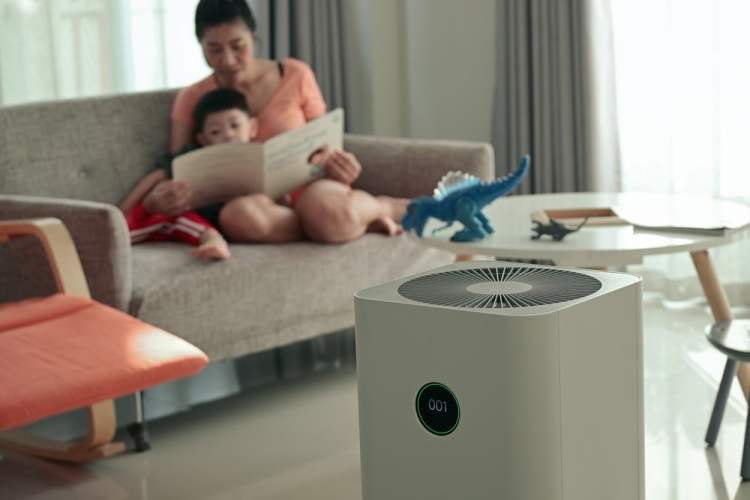Staying inside all winter with minimal ventilation makes the air stale, and pollutants can quickly build up. Your home’s air quality directly affects your household’s health, so improving the air circulating in your home will have lasting benefits. Here’s everything you need to know about your indoor air quality and how to improve it.
WHAT ARE INDOOR POLLUTANTS?
The air inside our homes can be more polluted than outdoor air, especially in the winter. Dust, dander, and allergens get stuck in carpets/rugs, so make sure to clean these frequently. Carbon monoxide and radon are also harmful air pollutants, so install monitors to alert you when these levels are too high; in the winter, fireplaces are often the source of carbon monoxide leaks, so get yours serviced regularly. Other household products, like cleaners, burning candles, and home fragrances, can emit volatile organic compounds (VOCs) into the air, so check the labels on your products and switch to cleaner versions if necessary.
HOW BAD IS YOUR AIR?
Before you make any big changes, consider buying an air quality monitor for your home to measure pollutants. Prices range from about $80 to $300. A “good” air quality index (AQI) is under 50, so if your air stays above 50 consistently, short and long-term health problems can develop (including asthma, allergies, trouble breathing, headaches, etc.).
SOLUTIONS
The first step to improving your air quality is to decrease as many sources of pollutants as you can. But no amount of traditional cleaning will improve your air as well as filters and purification systems. Here are the essential components to know when choosing a proper purification system for your home.
HEPA Filters
A HEPA (high-efficiency particulate air) filter can capture common air pollutants (dust, mold, dander, etc.). HEPA filters are designed to capture at least 99.97% of particulates that are 0.3 microns in diameter. Non-HEPA (or “HEPA-like,” “99% HEPA”, etc.) filters will have much lower rates of particle capture, so it’s best to avoid them. HEPA filters won’t do anything about gases, odors, or some viruses and bacteria, and because they trap unwanted particles, they need to be changed and/or cleaned regularly.
Activated Carbon Filters
Need to remove gases, odors, or other VOCs? Activated carbon filters can trap gas molecules and effectively remove them from the air. The “activated” part of this filter means the carbon has gone through a process that adds tiny carbon pores where the molecules get trapped. These filters are most effective when they use higher concentrations of carbon and are changed regularly.
UV Light
If trapping unwanted particles is good, wouldn’t destroying them be better? Photocatalytic purification (or UV light purification) uses UV light to activate a process that sends energy to break apart harmful molecules, thus destroying rather than trapping them. UV light is harmful to human cells, too, so be careful not to expose your skin or eyes for too long (almost all systems have UV light behind barriers, so you’re safe). UV light effectively kills many viruses and bacteria that HEPA filters can miss, but purifying air using UV light takes longer, so you need a big unit(s) and/or need to keep a UV purifier running longer for results. You’ll also have to replace the catalyst eventually (so read the manual carefully).
Standalone/Portable Units
The easiest and most inexpensive way to purify your home’s air is to buy several standalone/portable purifiers. Each model will indicate the square footage it covers and what kind of filter(s) it uses. Look for models where it’s easy to replace the filter(s), and the air refresh rate is at least 2.5 times an hour. For a great model that uses HEPA, activated carbon, and UV, try the MOOKA purifier. For a wide range of sizes and price points, check out the models at Levoit.
Central Air Units
If you’d like to make sure that all the air in your home is consistently purified, then investigate attaching filters and UV light systems to your central air system. Your HVAC technician can suggest options that fit your current setup, like HEPA filters for your furnace and A/C. Whole-house UV light systems can kill viruses and bacteria before the cold/warm air is circulated back into your home. While these system additions are expensive, they often have extended warranties and are ultimately the most effective way to tackle all your home’s pollutants at once.
Comments are not available on this story.
Send questions/comments to the editors.


